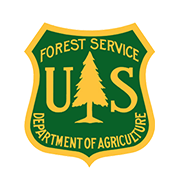Single Publication
Could not determine your location.
CALIFORNIA CONDORS FIND MICRO-TRASH FOLLOWING HUGHES FIRE 02-11-2025
Hughes Post-Fire BAER
Publication Type: News - 02/11/2025 - 15:13
CALIFORNIA CONDORS FIND MICRO-TRASH FOLLOWING HUGHES FIRE
As the Hughes fire was winding down, Angeles National Forest (NF) District Biologist Cheyenne Laeske observed a group of eight California condors on a road shoulder. She was saddened to see them picking through trash and litter. California condors are considered critically-endangered with fewer than 600 living individuals (and about 200 of those are in captivity).
As part of the BAER process, Threatened and Endangered species are considered a Critical Value. BAER Wildlife Biologist Robin Eliason joined the BAER team to assess potential impacts from watershed conditions to those Threatened and Endangered species. Typically, those assessments focus on post-fire flooding, debris flows, and erosion concerns. After Eliason’s assessment of the condor’s habitat in the burn area, she concluded that typical post-fire erosion and flooding effects were not issues for condors after the Hughes fire. However, there is a different type of emergency for condors in the fire area.
The Hughes BAER assessment team noted that even in the low burn severity areas, vegetation is completely burned off, exposing trash. Micro-trash is present along the roads, lakeshore, gathering areas, and along user-created trails. The team noted little trash in areas away from the roads. Given the fact that condors are using the fire area for foraging, the newly-exposed trash that used to be hidden by vegetation poses a significant threat.
To reduce the risk to California condors, the Angeles NF will coordinate a clean-up of the micro-trash in some portions of the Hughes fire area. The Forest Service hopes to partner with other agencies such as Los Angeles County Roads and Lake Castaic Park, and local volunteer groups.
The Angeles NF will share the BAER team’s findings with USDI Fish and Wildlife Service, and other interagency cooperators and partners.
Some California Condors Known-Facts:
- Condors are obligate scavengers (they only eat dead animals). They actively forage in burned areas.
- Condors are very curious. Like some humans, they are attracted to shiny things. They pick through trash looking for edibles and may confuse micro-trash with bone fragments and seashells, two important calcium sources.
- After the adults ingest trash, they regurgitate it for the chicks. Chicks lack the ability to eject this material. As a result, micro-trash accumulates in their crop or stomach. Consumption of small pieces of indigestible trash is the leading cause of death for chicks in Southern California.
NOTE: See related photos to this article under the “Photos” Tab on this Boise NF Post-Fire BAER InciWeb page: https://inciweb.wildfire.gov/incident-information/caanf-hughes-postfire-baer. Also see “Related Information” PDF article document containing related article photos below.
BAER SAFETY MESSAGE: Everyone near and downstream from the burned areas should remain alert and stay updated on weather conditions that may result in heavy rains and increased water runoff. Flash flooding may occur quickly during heavy rain events--be prepared to act and note emergency alerts issued by Los Angeles County. Current weather and emergency notifications for the Hughes Fire area can also be found at the National Weather Service website: www.weather.gov/lox/.
###

 InciWeb
InciWeb